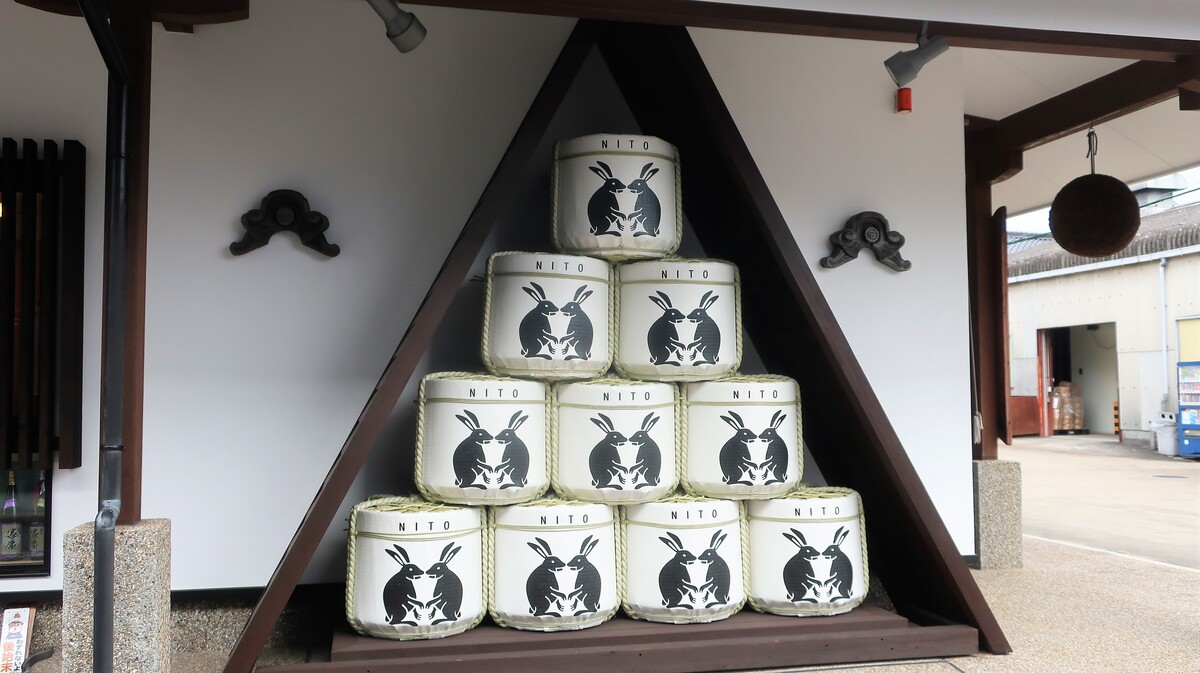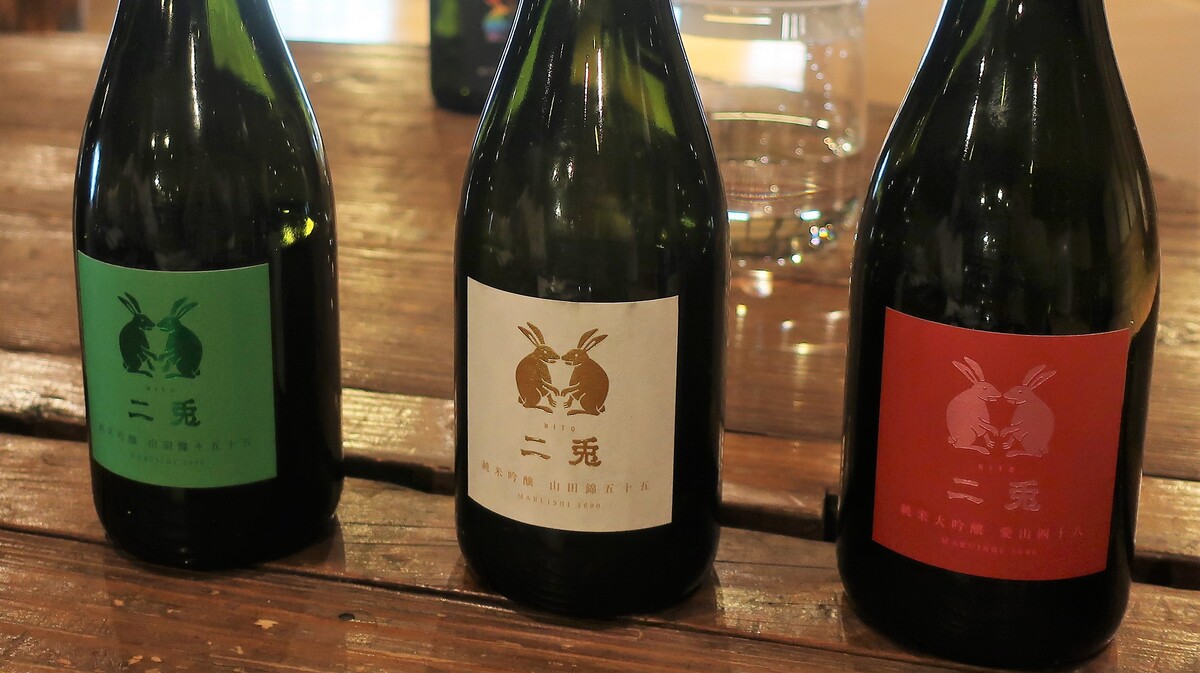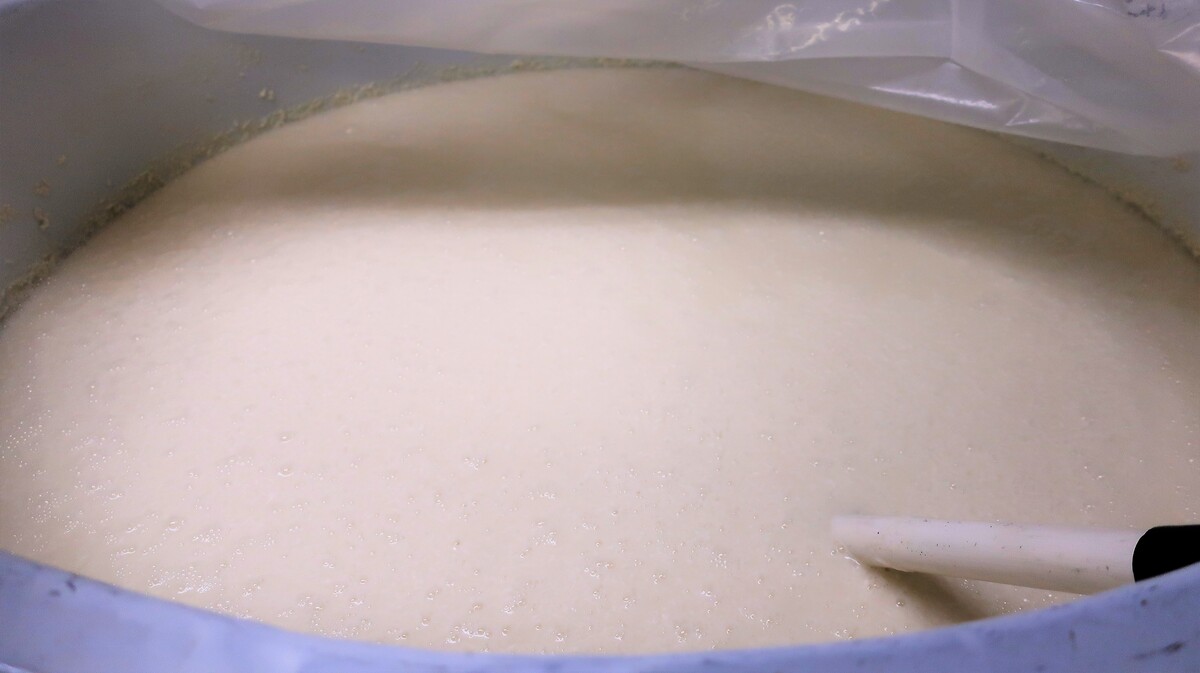Maruishi Jozo, a Long-established Sake Brewery in Okazaki with a Famous Brewing Brand "Nito" - SAKETOMO's Sake Brewery Tours in Aichi Part 2
Maruishi Jozo is one of the oldest sake breweries in Aichi Prefecture, brewing brands such as "Nito (二兎)", which has become very popular among sake lovers, "Mikawa Bushi (三河武士)" and "Tokugawa Ieyasu (徳川家康)".
In 2023, Okazaki City was in the midst of a major boom due to the "Dousuru Ieyasu" (What to do with Ieyasu), a Japanese historical TV series. It is also the 333rd anniversary of the founding of the Maruishi Jozo. It really is a wonderful coincidence.
We visited Maruishi Jozo and spoke with Hideki Fukada, the representative director of the 18th generation brewery, and Kunimitsu Katabe, who is in charge of sake brewing as toji (chief brewer).
-
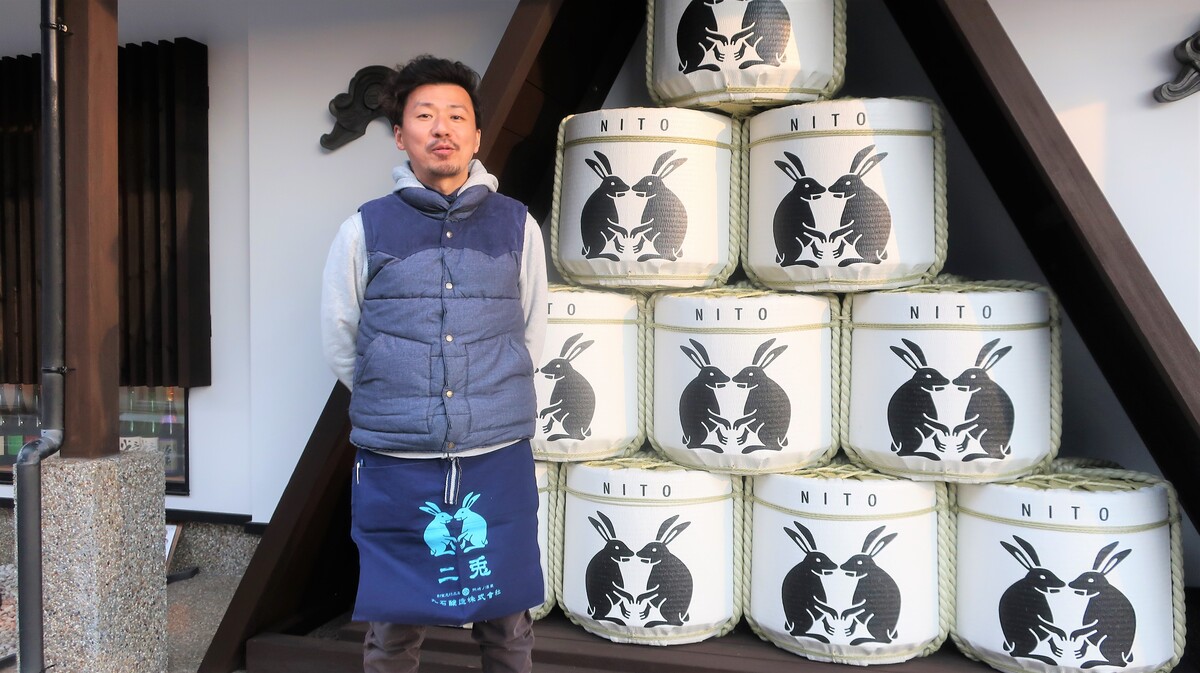
Touji (chief Brewer) Kunimitsu Katabe in front of the Nito sake barrel
Sake Breweries Interviewed:
Maruishi Jozo (Okazaki City, Aichi Prefecture)
Established 333 years ago! Maruishi Jozo one of the oldest sake breweries in Aichi Prefecture
Maruishi Jozo was founded in Okazaki in 1690, when Tsunayoshi Tokugawa, famous for his "Decree for the Pity of All Living Things," ruled the Edo shogunate as the fifth shogun and Matsuo Basho, who later wrote "Okunohosomichi," was touring Oshu and Hokuriku regions.
Mr. Fukada:
Okazaki prospered as a post town on the Tokaido Highway, and was a place where traffic to and from the east and west flourished. It is said that Maruishi Jozo began when an ancestor living in Okazaki saw sake made in the west being transported to Edo, learned about sake brewing, and built a sake brewery.
-
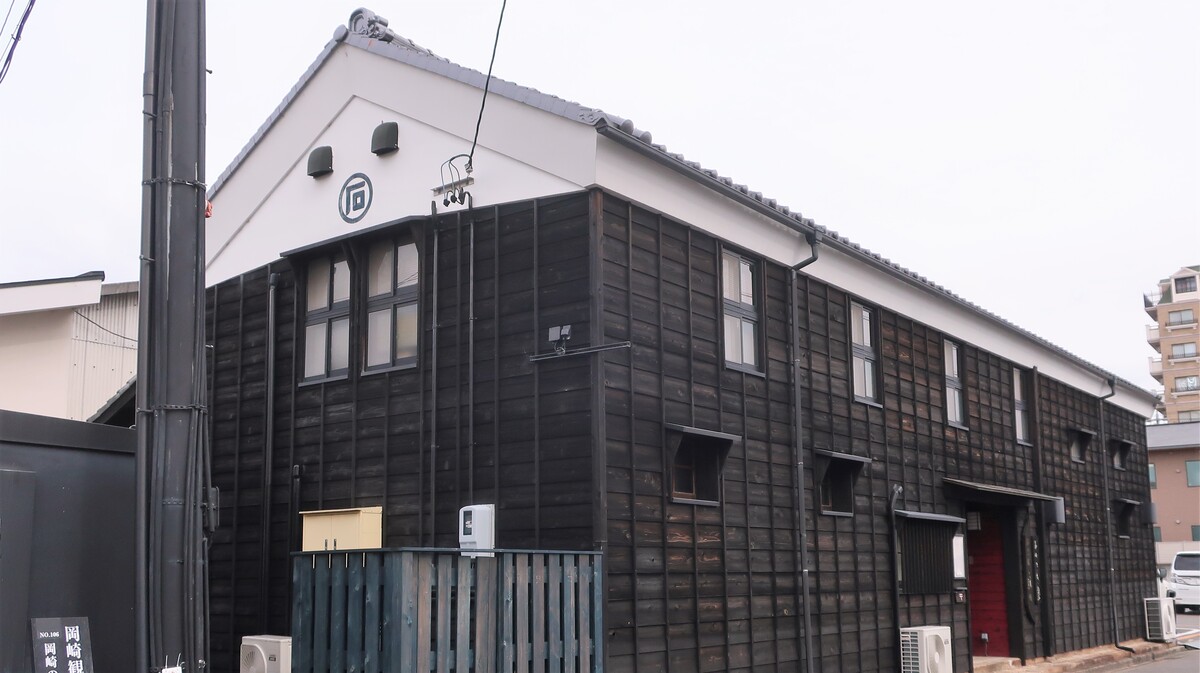
"Choyokan (長誉館)" a renovated old sake brewery, now used as an event space.
In the Meiji era, Maruishi Jozo expanded its business to include brewing miso and soy sauce, and even establishing a bank. In sake brewing, the company had a sake brewery in Nada as well as Okazaki, where sake was produced on a large scale.
In the Showa period (1926-1989), however, Maruishi Jozo faced a major turning point. During the Pacific War, Okazaki was heavily bombed and Maruishi Jozo was also damaged. The brewery was severely damaged, including its warehouse, which was destroyed by fire.
Mr. Fukada:
I heard that most of the part of Maruishi Jozo was burned down in the air raid. After that, the miso warehouse that remained partially burned down was converted into a sake brewery, and the business was resumed with a single focus on sake production. Currently, the brewery is run by four people, led by Touji Katabe, who also manages the sales, administrative, and direct sales staff, making a total of eight people.
-
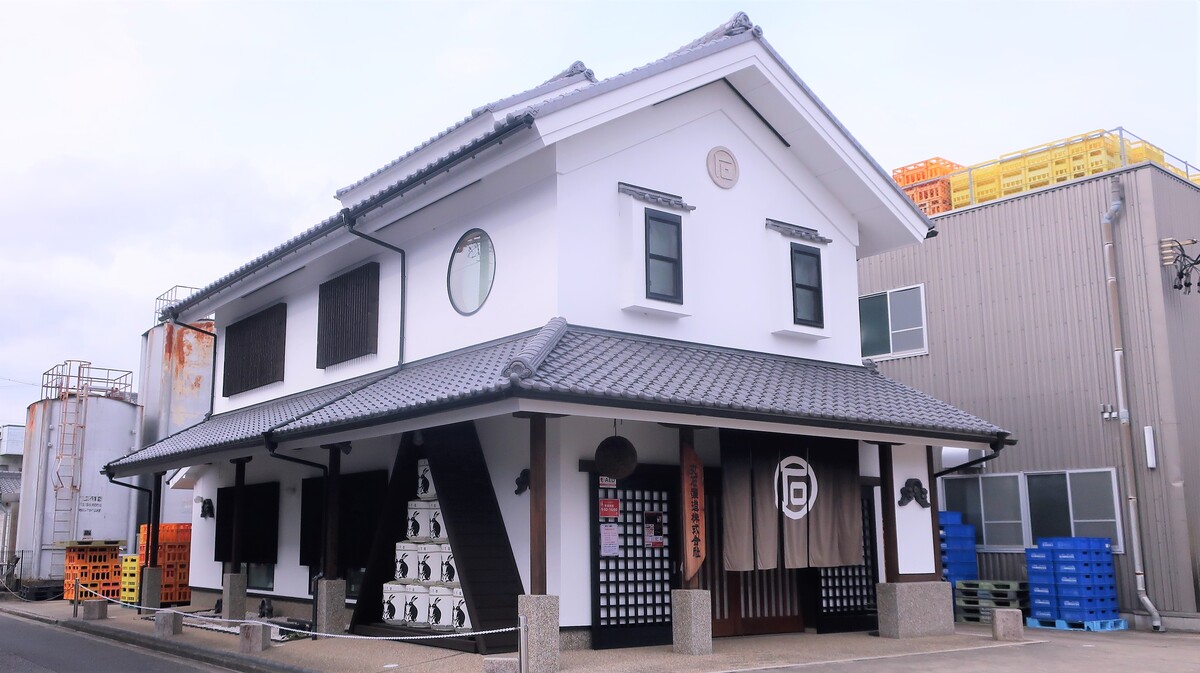
The head office building also houses the direct sales shop "Joan (醸庵)"
Maruishi Jozo's signature brand "Nito" attracting sake lovers
Maruishi Jozo is well known among sake lovers for its "Nito" brand, which you began selling in December 2015, how did you come up with the idea of creating this new brand?
Mr.Fukada:
After I joined Maruishi Jozo and had about a year of sake brewing experience, I went around to various sake specialty stores for selling our brands for a while. I was getting nothing but harsh comments from the sake brewers, saying, "This kind of sake is no good” Realizing that we could not go on like this, Katabe and the rest of the young staff decided to make sake that would be competitive in Tokyo five years from now. That’s when we started working on "Nito".
Actually, I had been drinking only beer and wine, not sake, so I wasn't very good at what I called "traditional sake. Because of this, we wanted to sell sake that we ourselves could enjoy with confidence. Katabe was in charge of the sake brewing process with the concept of "sweetness, acidity, and a good aftertaste, and I was in charge of the marketing and design aspects of the sake.
How did you decide on the name and the label of the brand?
Mr.Fukada:
The first thing we decided was to use an animal name. Many sake names have many kanji characters and are difficult to read, so we wanted to make a name that was easy to understand and remember. We used the word "Nito" (two hares) to describe the sake's characteristics, such as "delicious in both aroma and taste," "sweet yet refreshing and dry," and "complex yet simple in taste. The story and the label were created in the form of the Japanese phrase, "Only those who chase two hares will catch two hares.” In this way, sake shops began to use this term to describe the sake. Also, sake fans who liked the labels started posting them on social media and the brand began to spread!
Many sake breweries from all over Japan come to Tokyo with their sake to sell, so if we fail once, we may not get another chance. That is why we felt that we had to establish a winning brand with a winning sake from the start. Of course the taste is important, but we also need to create a logic that makes people want to sell it and pick it up. We are also making efforts in terms of the taste, packaging, and story to make our products attractive to women and people from overseas.
What is unique about the sake brewing process at "Nito"?
Mr.Katabe:
Two types of microorganisms play an active role in sake brewing. koji, which converts rice into sugar, and yeast, which converts sugar into alcohol. The yeast produces carbon dioxide and alcohol as well as aroma components during the fermentation process, but if the aroma were different, the sake would taste completely different, so we express the "Nito" character by using the same yeast and matching the aroma.
We then express the differences in flavor within "Nito" by changing the type of rice used for sake and the ratio of rice polished. There are five types of rice used.
"Omachi" has a full-bodied flavor, "Yamadanishiki" has a clear taste, "Dewa Sansan" has a soft, round flavor, and "Aiyama" has a rice-derived cherry-like aroma. “Banzai" is made locally in Okazaki. It was originally produced as votive rice for Emperor Taisho when he ascended to the throne, and is used only at Maruishi Jozo. Sake made with "Banzai" has the inherent graininess of rice.
-
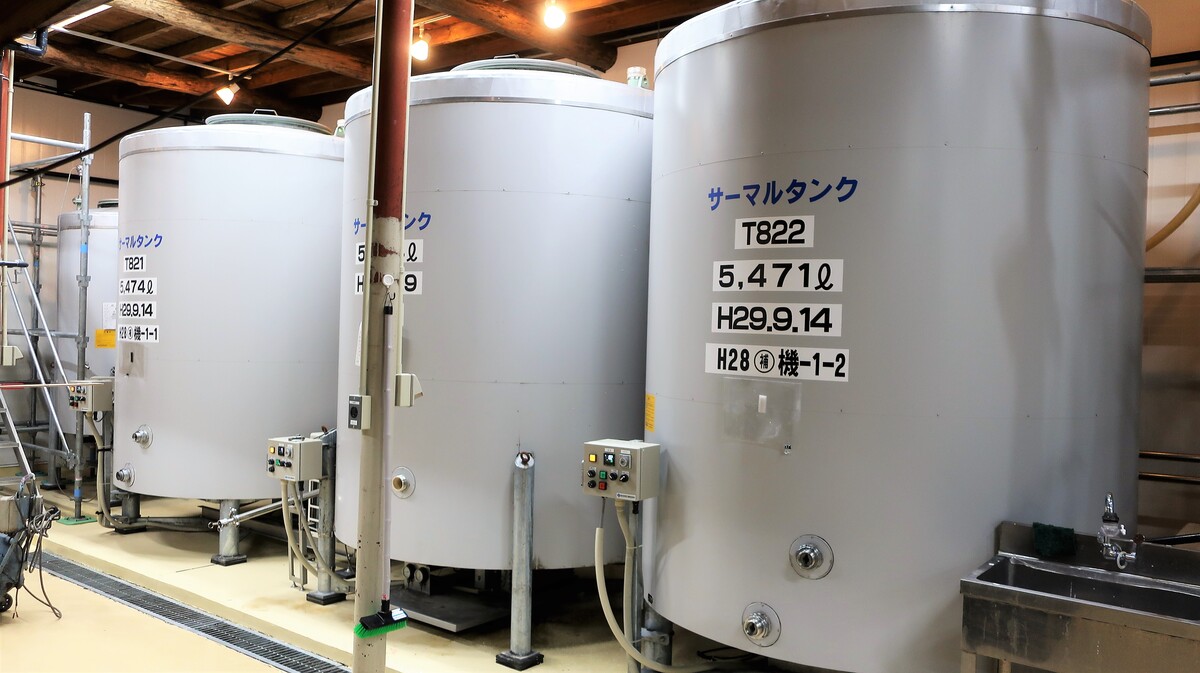
Sake is brewed in thermal tanks lined up in the brewery, with temperatures closely controlled.
Mr. Katabe:
In order to maintain the fresh, juicy flavor and freshness of the sake, we focus on "how to prevent deterioration of the sake after brewing". Sake brewing itself is a typical three-stage brewing process. In order to keep the flavor clear, we remove all moisture from the sake during the koji making stage. In cold regions such as the Tohoku region, it is possible to cool and dry the koji using only outside air, but Okazaki is warm and humid, so we cool the koji by forcing air to blow the moisture out of the koji while cooling it, so that excess flavors do not appear. During the brewing stage, the sake is fermented at low temperatures in thermal tanks (see note), with the temperature adjusted in 0.1 degree Celsius increments.
The temperature is lowered to 2 to 3 degrees Celsius before bottling in order to prevent the volatilization of gases generated during the raw sake stage. By pressing and bottling while the gas is still dissolved in the liquid, the gas does not escape when the sake returns to room temperature. This slightly carbonated state is also a key point in our quest for freshness.
*Note: A storage tank with a cooling system that enables fine temperature control and refrigeration management.
Could you tell us about the flavor characteristics of "Nito"?
Mr. Katabe:
We are conscious of the "moderate aroma" because it is a sake that goes well with food. I imagine that the aroma opens up just right when you put it in a wine glass.
At first, you can taste the sweetness that comes from the "umami" of the rice, and then a good acidity finishes the taste. If it were only sweet, it would be too heavy, but the acidity is also well expressed to make it a clear and crisp flavor.
From a sake maker's point of view, it was said that making sake with acidity was "poor sake making". Even today, acidity is still an unpopular element in sake contests. However, when we think about pairing sake with food as a food sake, we believe that the acid flavor of sake is necessary as the equivalent of the bitterness in beer or the astringency in wine.
-
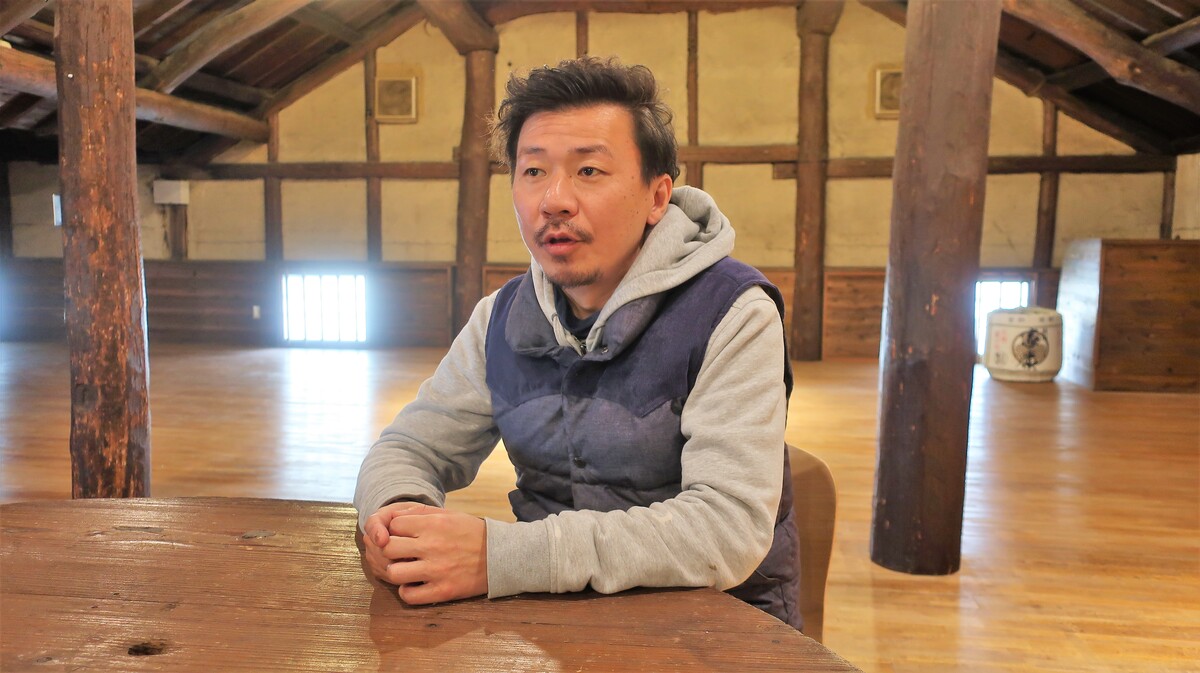
Mr. Katabe, the toji (chief brewer)
As a brewer, how would you like people to taste "Nito"?
Mr. Fukada:
Sake is a luxury item, so I think it is best if it is enjoyed in a good atmosphere. As a brewer, I would like people to drink it chilled, but I do not force them to do so. It is the best if the drink is enjoyed according to the taste of the person who bought it. We make our sake so that people can drink it casually, having “Nito” by their side in various situations.
“Mikawa Bushi", "Tokugawa Ieyasu," and "Choyo" loved in Okazaki
In addition to "Nito," Maruishi Jozo has three other brands: "Mikawa Bushi," "Tokugawa Ieyasu," and "Choyo." Please tell us about the history and characteristics of each.
Mr.Fukada:
“Mikawa Bushi" is a sake made from 100% Mikawa rice. Currently, there are two types: Junmai sake and Junmai ginjo. It is made with a yeast that produces a sharp taste that differs from that of "Nito", giving it a clean and refreshing flavor. This sake goes well with the flavor of miso, a specialty of Okazaki. It is improving in quality every year.
“Tokugawa Ieyasu" is a Daiginjo made entirely from "Yamadanishiki", and has won the gold medal several times at the National New Sake Competition. It is characterized by its gorgeous aroma, and although it is numerically a dry sake, it also has a touch of sweetness. Currently, two types of sake, Junmai Daiginjo and Daiginjo, are produced, and they are popular as gifts. Due in part to the latest Japanese popular historical TV series (What to do, Ieyasu?) effect, it has attracted the attention of many liquor stores.
“Choyo" was originally a brand name given to sake produced in Nada during the Meiji era (1868-1912), and is now one of the brand names used for the sake we continue to produce. It has a robust flavor and can be enjoyed as a heated sake. It is still popular as barrel sake for festivals.
“Mikawa Bushi," "Tokugawa Ieyasu," and "Choyo" are all sold to the general public. Of these, "Mikawa Bushi" is still distributed mainly within Aichi prefecture, but in the future we plan to make it a sake for Aichi prefecture only.
-
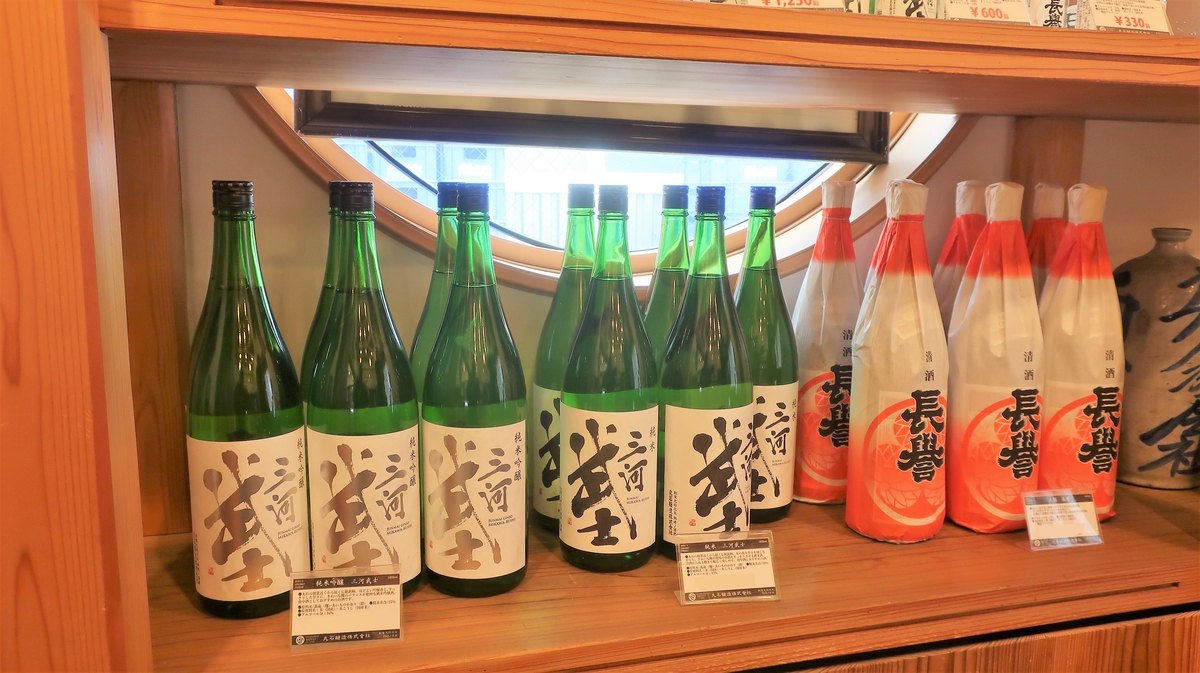
“Mikawa Bushi” and “Choyo”
What is the brewery's recommendation for the perfect snack to go with "Nito" and "Mikawa Bushi"?
What kind of snacks do you drink "Nito" with?
Mr. Fukada:
I often pair it with sweets and desserts. I often pair "Omachi" with a buttery tart, or "Dewa Sansan" with Mame Daifuku, a sweet bean cake made with red bean paste. It is also delicious with millefeuille and cheese. The other day, I discovered a new taste when I paired "Banzai 70" with strawberry Daifuku. I often pair it with Chinese food.
Mr.Katabe:
I don't often pair it with Japanese food either. Among the "Nito" brands, Junmai sake such as "Yamadanishiki" and "Banzai" are often paired with meat. They also go well with dishes that use oil or spicy food. We hold a sake and food party with the Gamagori Classic Hotel, and the low-polished Junmai sake is also a good match for the main dish, which has a multilayered flavor. On the other hand, Junmai Daiginjo and other such sake are overwhelmed by such dishes, so we pair such highly-polished sake with fish-based dishes that use oil.
"Mikawa Bushi" goes well with a wide range of Japanese dishes, whether "kaiseki" or "obanzai". It goes well with miso and soy sauce as well as salty soy sauce. We recommend "Tebasaki" (chicken wings).
As Mikawa and Okazaki are known for "soybean miso", what is Maruishi Jozo's recommended combination of "soybean miso snacks" and sake?
Mr.Fukada:
I often pair it with "Banzai" from "Nito". I also often pair it with miso hotpot or "dote-ni", and miso dip is also a popular snack. "Banzai" is Okazaki's rice, so I like to pair it with Okazaki products.
Mr.Katabe:
I also enjoy miso hotpot and "dote-ni". I also pair it with "Mikawa Bushi," which is made from local rice.
The brewer and toji, who had no background of sake brewing before, are working on the foundation for the future of Maruishi Jozo
Mr.Fukada says that before joining Maruishi Jozo at the age of 31, he had little experience with sake itself, let alone sake brewing. However, because he did not know much about sake, "I was able to get a bird's eye view of both the good and the bad in the sake industry," he says.
Mr.Katabe, who is currently in charge of sake brewing as the toji (chief brewer), originally had no experience with sake brewing either, but he joined Maruishi Jozo at the age of 26, where he learned about sake brewing and found it fascinating. Mr.Katabe says, "I want to make sake with the flavor I want to make, while imagining something that will make the drinker happy and smile". While taking into account the changing tastes and preferences of the world over time, he approaches sake brewing with the mindset of "using rice as a tool to help the microorganisms slowly nurture the sake”.
As a brewer, Mr.Fukada's goal is to build the foundation of Maruishi Jozo that will last for 400 to 500 years, and now that the brewery is celebrating its 333rd anniversary, he says that his job is to build the foundation so that the next generation and the generation after that can carry on the tradition. Having seen a different world from that of sake, Fukada and Katabe are opening up a new world of sake, and we will be keeping an eye on them in the future.
For those who want to know more about "Nito" and "Mikawa Bushi," information on stores, brewery tours, and events
Store "Jouan" is open from 9:00 to 16:00, closed on Sundays and national holidays, closed during the year-end and New Year holidays, GW and Bon vacations. Cash only.
For more information, please visit the Maruishi Jozo website.
Sake brewery tours are not open to the public.
The event space "Choyo-kan" is open for tours during events, etc.
Events "Maruishi Day" is held on the second Saturday and Sunday of each month. Only on Maruishi Day, a limited number of Nito is sold.
Events are usually held in February (kurabiraki), April (spring festival), July (SAKE BAR), and December (year-end, new sake). For more information, please visit the Maruishi Jozo website.
Mr. Fukada:
When you visit Maruishi Jozo, we recommend taking a walk along Otogawa River to Okazaki Castle. In recent years, the road along the Otogawa River has been well maintained, making it an easy walk and a perfect course for a stroll. If you are looking for stores, we recommend Izumiya, a Japanese sweets shop that serves delicious Mitarashi dumplings and "Kanto-ni (oden)", and Katsura, a Japanese sake bar.
Where to buy "Nito”
Please refer to the list of authorized stores on the Nito brand website.
関連記事



